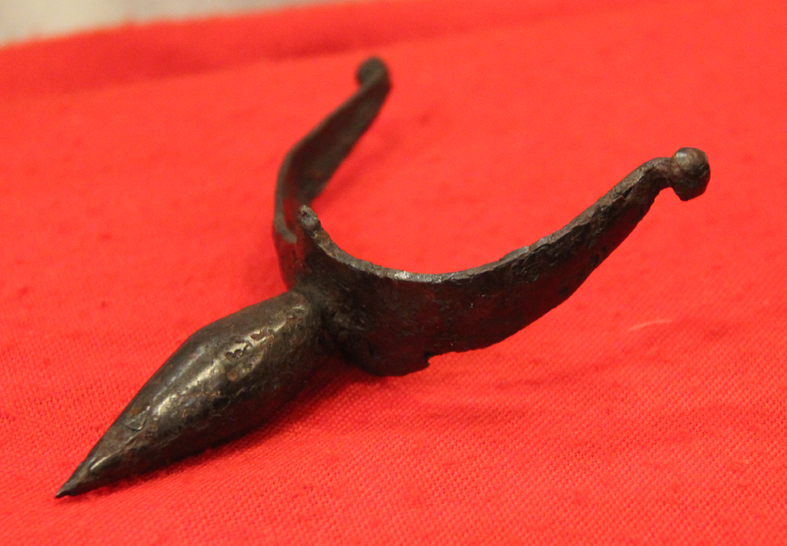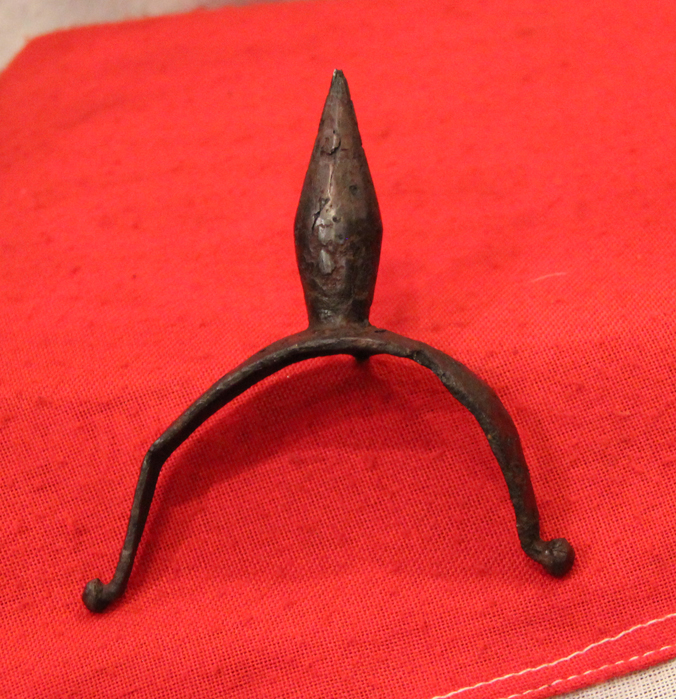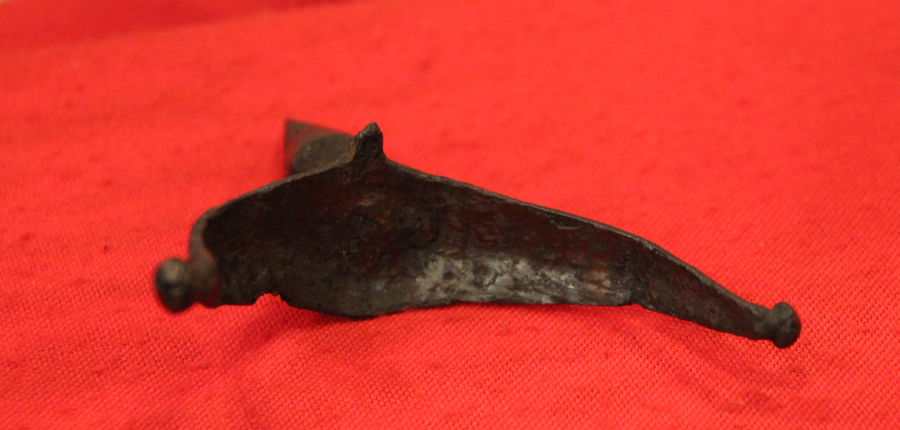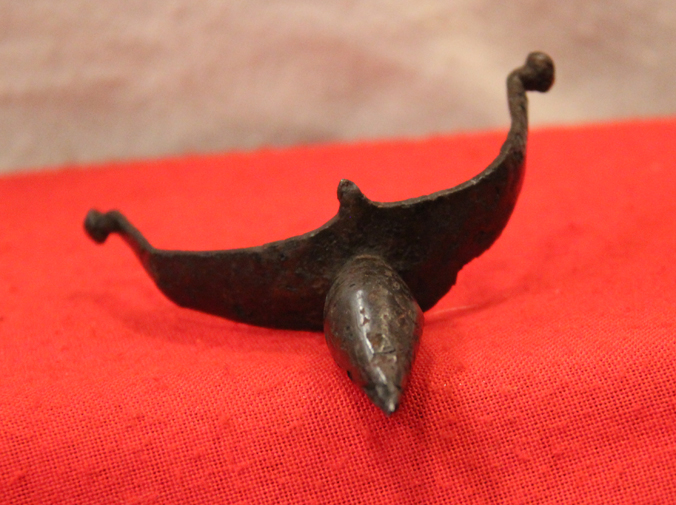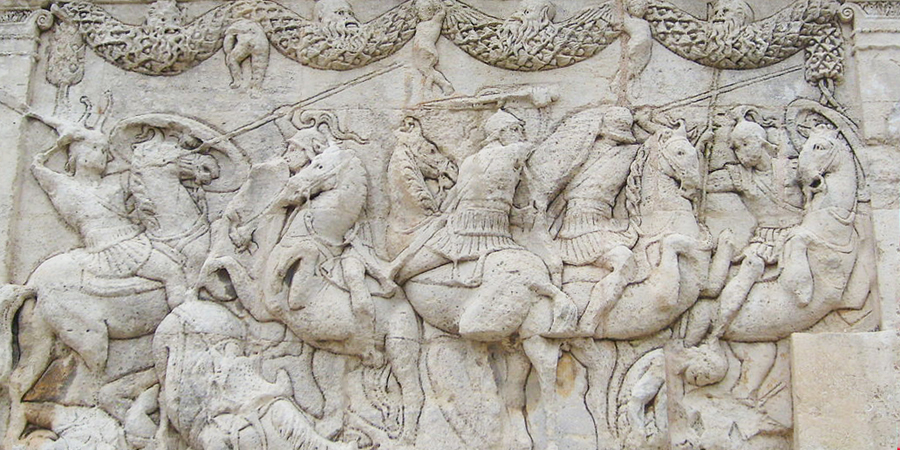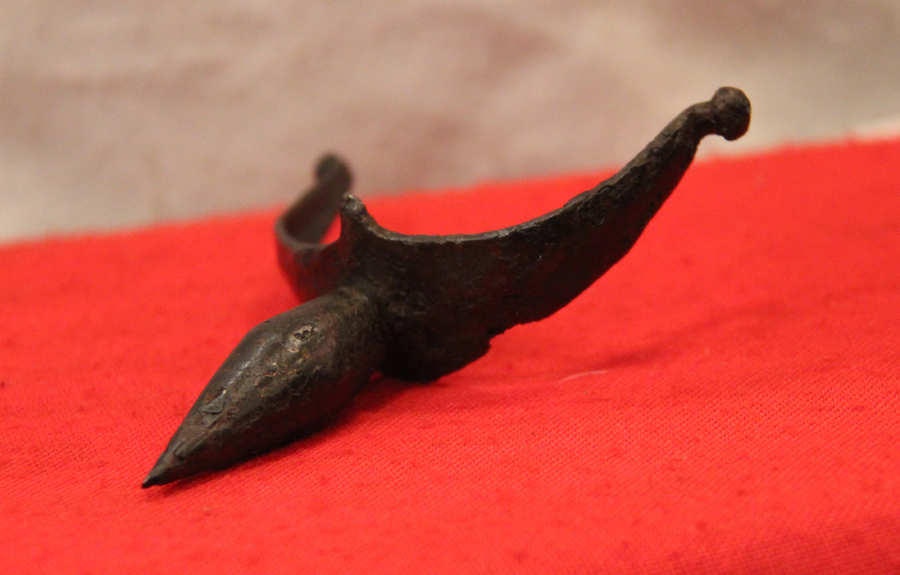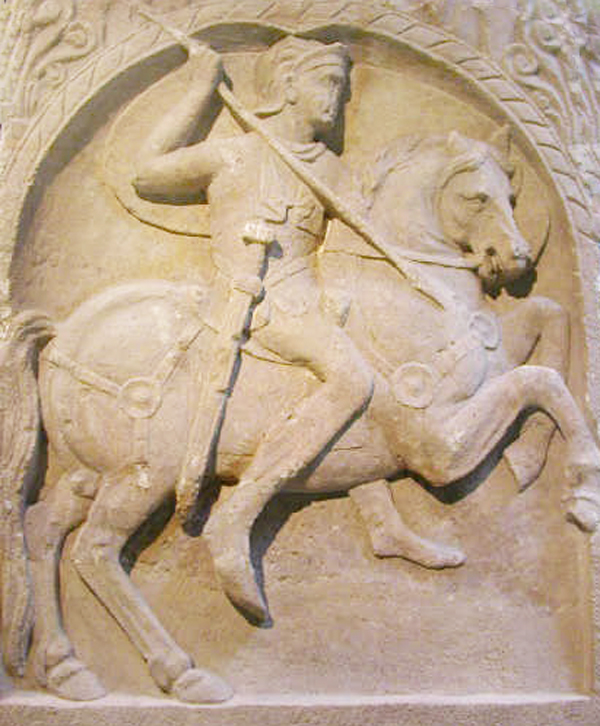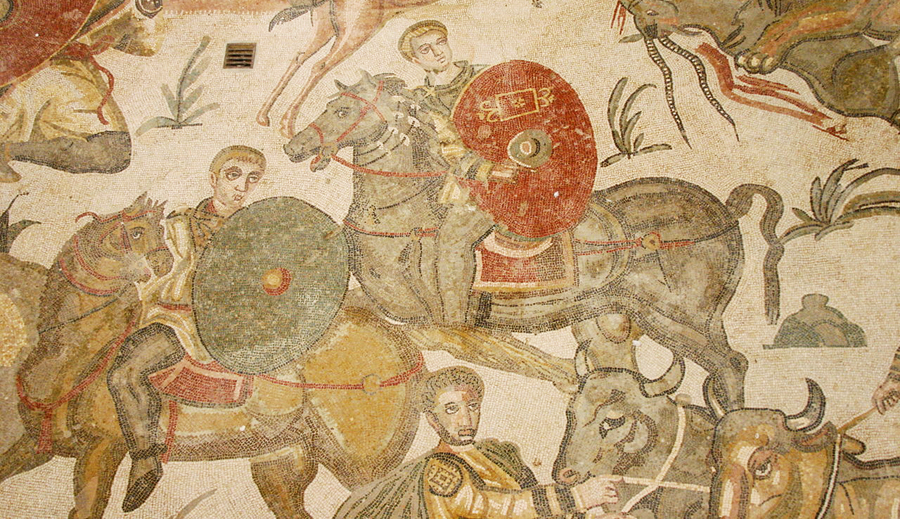A Fine & Rare Original Heavy Grade Imperial Roman Legionary Cavalry Officer's Iron Prick Spur 1st - 2nd Century A.D From Emperors Augustus, Tiberius, Caligula, Claudius & Nero to The Era Of Emperors Trajan & Hadrian
In very nicely preserved condition. A good heavy grade quality and rare piece from Imperial Rome.
Imperial cavalry (30 BC – 476 AD)
When the Republic transitioned into the Empire, Augustus made a regular Auxilia corp of non-citizen soldiers. These professional Roman soldiers, like the Legions, were subjects recruited from the non-citizens in provinces controlled by Rome that had strong native cavalry traditions. These men, unlike the Allied Foederetii cavalry, were a regular part of the Roman army and were paid and trained by the Roman State. Arrian describes them as well-equipped and performing well-executed manoeuvres. A typical cavalrymen of the Ala would be paid 20 percent more than a typical citizen legionary.
Roman Auxilia cavalry were usually heavily armoured in mail and armed with a short lance, javelins, the Spatha long sword, and sometimes bows for specialist Horse archer units. These men primarily served as Medium missile cavalry for flanking, scouting, skirmish, and pursuit. As opposed to more modern cavalry units where the horses were kept in stables separate from the riders, Roman cavalry housed the riders and horses in the same barracks.
Although Augustus created regular Auxiliaries, irregular allied forces were still used. For example, Marcus Aurelius recruited Sarmatian allied cavalry to be stationed in Britain. By the 4th century, Romans relied heavily on irregular allies from the migrating Germanic tribes and the Huns.
Augustus, Gaius Julius Caesar Augustus (born Gaius Octavius; 23 September 63 BC – 19 August AD 14), was also known as Octavian, and was the founder of the Roman Empire. He reigned as the first Roman emperor from 27 BC until his death in AD 14. The reign of Augustus initiated an imperial cult, as well as an era of imperial peace (the Pax Romana or Pax Augusta) in which the Roman world was largely free of armed conflict. The Principate system of government was established during his reign and lasted until the Crisis of the Third Century.
Tiberius Julius Caesar Augustus 16 November 42 BC – 16 March AD 37, was Roman emperor from AD 14 until 37. He succeeded his stepfather Augustus, the first Roman emperor. Tiberius was born in Rome in 42 BC to Roman politician Tiberius Claudius Nero and his wife, Livia Drusilla. In 38 BC, Tiberius's mother divorced his father and married Augustus. Following the untimely deaths of Augustus's two grandsons and adopted heirs, Gaius and Lucius Caesar, Tiberius was designated Augustus's successor. Prior to this, Tiberius had proved himself an able diplomat, and one of the most successful Roman generals: his conquests of Pannonia, Dalmatia, Raetia, and (temporarily) parts of Germania laid the foundations for the empire's northern frontier.
Caligula, Gaius Caesar Augustus Germanicus was Roman emperor from AD 37 until his assassination in AD 41. He was the son of the Roman general Germanicus and Augustus' granddaughter Agrippina the Elder, members of the first ruling family of the Roman Empire. He was born two years before Tiberius was made emperor. Gaius accompanied his father, mother and siblings on campaign in Germania, at little more than four or five years old. He had been named after Gaius Julius Caesar, but his father's soldiers affectionately nicknamed him "Caligula" ('little boot')
Caligula's sister, Agrippina the Younger, wrote an autobiography that included a detailed account of Caligula's reign, but it too is lost. Agrippina was banished by Caligula for her connection to Marcus Lepidus, who conspired against him.170287Caligula also seized the inheritance of Agrippina's son, the future emperor Nero. Gaetulicus flattered Caligula in writings now lost. Suetonius wrote his biography of Caligula 80 years after his assassination, and Cassius Dio over 180 years after; the latter offers a loose chronology. Josephus gives a detailed account of Caligula's assassination and its aftermath, published around 93 AD, but it is thought to draw upon a "richly embroidered and historically imaginative" anonymous biography of Herod Agrippa, presented as a Jewish "national hero".286 Pliny the Elder's Natural History has a few brief references to Caligula, possibly based these on the accounts by his friend Suetonius, or an unnamed, shared source. Of the few surviving sources on Caligula, none paints Caligula in a favourable light. Little has survived on the first two years of his reign, and only limited details on later significant events, such as the annexation of Mauretania, Caligula's military actions in Britannia, and the basis of his feud with the Senate
Claudius, Tiberius Claudius Caesar Augustus Germanicus 1 August 10 BC – 13 October AD 54) was a Roman emperor, ruling from AD 41 to 54. A member of the Julio-Claudian dynasty, Claudius was born to Drusus and Antonia Minor at Lugdunum in Roman Gaul, where his father was stationed as a military legate. He was the first Roman emperor to be born outside Italy.
Nero Claudius Caesar Augustus Germanicus 15 December AD 37 – 9 June AD 68) was a Roman emperor and the final emperor of the Julio-Claudian dynasty, reigning from AD 54 until his death in AD 68.
Nero was born at Antium in AD 37, the son of Gnaeus Domitius Ahenobarbus and Agrippina the Younger (great-granddaughter of the emperor Augustus). Nero was three when his father died.1 By the time Nero turned eleven,2 his mother married Emperor Claudius, who then adopted Nero as his heir. Upon Claudius' death in AD 54, Nero ascended to the throne with the backing of the Praetorian Guard and the Senate. In the early years of his reign, Nero was advised and guided by his mother Agrippina, his tutor Seneca the Younger, and his praetorian prefect Sextus Afranius Burrus, but sought to rule independently and rid himself of restraining influences. The power struggle between Nero and his mother reached its climax when he orchestrated her murder. Roman sources also implicate Nero in the deaths of both his wife Claudia Octavia – supposedly so he could marry Poppaea Sabina – and his stepbrother Britannicus.
With his death, the Julio-Claudian dynasty ended. Chaos would ensue in the year of the Four Emperors.
4 inches x 3.5 inches, 2 inch long spike .
Code: 21916
495.00 GBP

